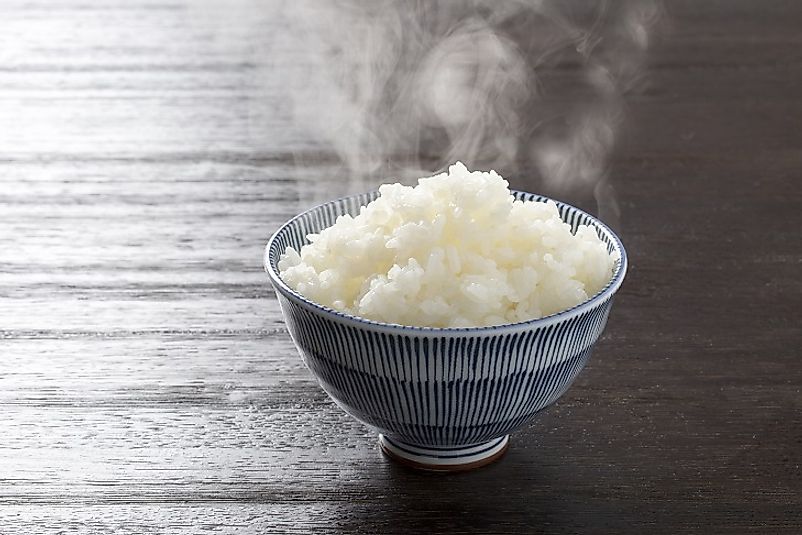What Are the World's Most Important Staple Foods?

Staple foods are those that constitute the majority of a particular diet, and generally supply virtually all or most of the total intake of energy and nutrients. People usually consume these staple foods daily or multiple times a day. Culture, climate, and trade are all factors that determine the popularity of a certain food. Over 50,000 plants are edible, but very few of them make any significant contribution to the human food supply. The overwhelming majority of global staple foods are grains. Corn, rice, and wheat together make up 51% of the world’s caloric intake. Below is a look at these important food staples.
Corn - 19.5%
Indigenous populations in present-day Mexico first domesticated corn around 10,000 years ago. Its long history there explains why it continues to be a staple food today. Nearly every typical Mexican dish revolves around corn in some way, and it is the main ingredient in maize tortillas, for example. With international trade, corn has been spread throughout the world and now makes up a major source of food in Africa, Europe, and the US. People boil and eat it whole, dry and pulverize it to make flour, and cook it in sweetened milk for dessert. It can be processed for other uses that include as ingredients in sweeteners (corn syrup), alcohol (whiskey), and cooking oil. Globally, humans get 19.5% of their calorie intake from corn.
Rice - 16.5%
Rice is the predominant source of nourishment each day for more than 1.6 billion people around the world, from Asia to Latin America to Africa. First domesticated in India and Southeast Asia, people have been growing it for thousands of years. Research shows that Japan first began consuming rice around 100 BC. During Portuguese trade expeditions, it was brought to South America. Rice requires a warm, humid climate for survival and flourishes in floodplains. China, Indonesia, and India are the biggest cultivators. Today, rice makes up 16.5% of global caloric intake
Wheat - 15%
The Middle East is where wheat originates, as it was first grown in the Ancient Mesopotamian region near present-day Iraq. Researchers believe this was the first domesticated crop, prompting the spread of agriculture, and resulting in rapid increases in human population. The US, China, Russia, India, and France are the largest producers of wheat in the world. Wheat is typically dried and pulverized to make flour. This flour is used to make bread, crackers, pasta, breakfast cereals, and pastries. Its nutritional value is higher, however, when it is consumed whole. Approximately 15% of the world’s calorie intake comes from wheat.
Root and Tuber Crops - 5.3%
Another significant portion of global caloric intake comes from the consumption of roots, which provide 5.3% of humanity's energy intake. Roots, also known as tubers, often grow in climates that are difficult for other crops. Cassava, also called yuca or manioc, is the most common of the tubers. Alone, it provides 2.6% of global calorie intake. Originally from the Amazon region of South America, it has made its way across the world. Diets in both South America and Africa are largely supplemented by this plant. Potatoes, originating in the Andes mountains of South America, make up 1.7% of the world’s calorie consumption. They were introduced to Europe in the 16th Century and became a common food source for those living in poverty. A blight in Ireland caused the Great Famine of the mid-1800’s due to their reliance on this crop. Other common root food sources include sweet potato (.6%) and yams (.4%).
Other Important Staple Foods
Other staple foods around the world include soybeans, sorghum, and plantains. Soybeans originated in East Asia and today are grown in the US and Brazil (among other places). They are an excellent source of protein. Sorghum is a grain that grows in inhospitable climates and is an important crop for people living in semi arid regions of Asia and Africa. Plantains are grown in tropical areas and rainforests throughout Latin America and Africa where they are an important part of the local diet.
Most Important Staple Foods In The World
| Rank | Staple Food | Share of Global Caloric Intake From All Sources |
|---|---|---|
| 1 | Maize Corn | 19.5% |
| 2 | Rice | 16.5% |
| 3 | Wheat | 15.0% |
| 4 | Cassava | 2.6% |
| 5 | Soybeans | 2.1% |
| 6 | Potatoes | 1.7% |
| 7 | Sorghum | 1.2% |
| 8 | Sweet Potato | 0.6% |
| 9 | Yams | 0.4% |
| 10 | Plantain | 0.3% |







